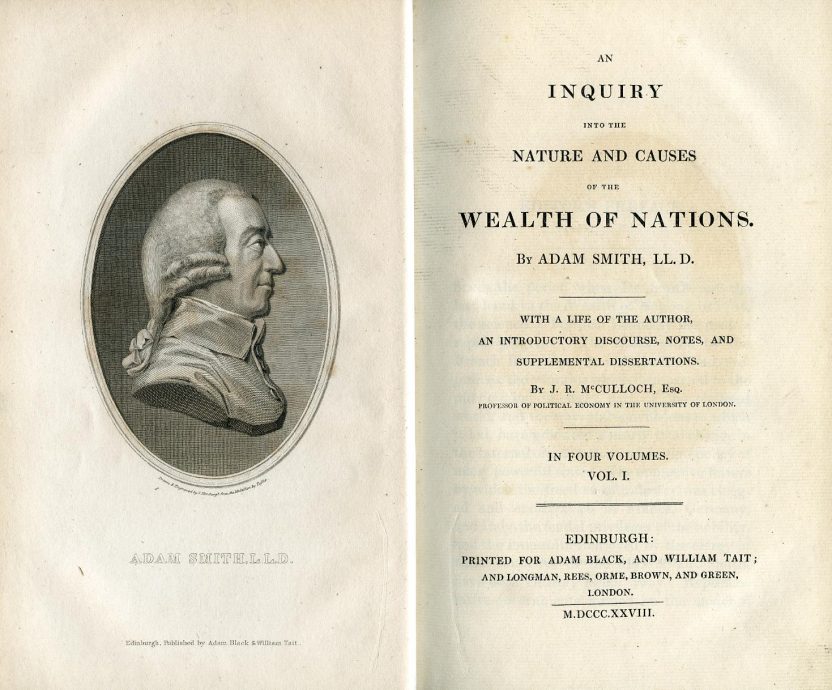Reno assumes the alternative is between the weak loves of neo-liberalism and the strong loves of a revivified European conservativism.
A Sympathetic Liberty
In the early 2000s, I was appointed to direct the George W. Bush Administration’s Center for Faith-Based and Community Initiatives (FBCI) at the U.S. Department of Labor. The FBCI was intended to be the Administration’s signature domestic policy initiative with the purpose of leveling the legal, regulatory, administrative and funding playing fields between established government and nonprofit human services agencies and the “little platoons” of smaller neighborhood- and community-based nonprofits, including religiously-affiliated organizations. The inclusion of faith-based groups required reshaping of federal programs that had grown inhospitable to faith-oriented groups.
Early on, the staff working on the initiative at the various federal agencies were concerned about ideological opposition among the career civil service. Over time, it became clear that the most significant opposition to the project came not from members of the permanent bureaucracy who, in many cases, were remarkably willing to cooperate, but from the ranks of other political appointees.
Some appointees were populist, anti-big-government conservatives who would jeer about “welfare in a tuxedo.” The more explicitly libertarian appointees objected that the initiative was another futile effort at redistribution. In one extraordinary case, an attorney working on the initiative itself attempted to dissuade me from my work with a copy of the dystopian youth novel, The Giver. The implied message seemed to be that the initiative’s real work was in securing free exercise of religion rather than directly aiding the poor who were necessary in order to avoid social homogenization. Occasionally I found myself thinking (and sometimes saying aloud), “Liberals are our opponents; libertarians are the enemy.”
Unfair? Perhaps. Libertarianism, rightly understood, has more than adequate historical and philosophical resources to articulate both a concern for the poor and sound anti-poverty policy. I comfort myself with the fact that many libertarians seem relatively uninformed about the full possibilities of their own philosophy.
Over the past year, I have become convinced that a broader and more robust understanding of the classical liberal project embodied in the totality of Adam Smith’s work—The Theory of Moral Sentiments and The Wealth of Nations—might hold the seeds of, if not peace, perhaps a rapprochement, or at least a greater mutual appreciation. Smith’s view of the centrality of the human person and how human beings develop is the starting point for this conservative-libertarian convergence. This new understanding would be undergirded by Smith’s concept of “sympathy” as the source of both the mutuality and interdependence cherished by conservatives and the properties of “emergent order” so valued by libertarians.
Sympathy and Poverty
There are three key passages in Moral Sentiments in which Smith lays out the motivation for and the primary mechanism by which human beings are made fit for social life, including participation in markets. I think many would be surprised that Moral Sentiments, which is the fundament of all of Smith’s thinking, begins with an appeal to human altruism:
However selfish soever man may be supposed, there are evidently some principles in his nature, which interest him in the fortune of others, and render their happiness necessary to him, though he derives nothing from it except the pleasure of seeing it.
Ayn Rand notwithstanding, the founding thinker of classical liberalism and free markets not only didn’t reject fellow-feeling and concern for others, he believed it was inescapable, built into our very nature, and necessary to our well-being.
Smith goes on to describe what today’s neuroscience understands to be the function of “mirror” neurons which are the means by which human beings establish and develop stable relationships with others and achieve psycho-emotional balance within themselves.
Were it possible that a human creature could grow up to manhood in some solitary place, without any communication with his own species, he could no more think of his own character, of the propriety or demerit of his own sentiments and conduct, of the beauty or deformity of his own mind, than of the beauty or deformity of his own face. All these are objects which he cannot easily see, which naturally he does not look at, and with regard to which he is provided with no mirror which can present them to his view . . . Bring him into society . . . and [h]e will observe that mankind approve of some of [his passions] and are disgusted by others. He will be elevated in the one case, and cast down in the other; his desires and aversions, his joys and sorrows, will now often become the causes of new desires and new aversions, new joys and new sorrows: they will now, therefore, interest him deeply, and often call upon his most attentive consideration.
In the final passage, Smith describes what happens as this mirroring action shapes human character and conditions his natural sociability:
Man naturally desires, not only to be loved, but to be lovely; or to be that thing which is the natural and proper object of love. He naturally dreads, not only to be hated, but to be hateful; or to be that thing which is the natural and proper object of hatred. He desires, not only praise, but praiseworthiness; or to be that thing which, though it should be praised by nobody, is, however, the natural and proper object of praise. He dreads, not only blame, but blameworthiness; or to be that thing which, though, it should be blamed by nobody, is, however, the natural and proper object of blame.
Smith then develops his concept of the “impartial spectator” or the “man within the breast” who is, at all times, judging our psychological and emotional responses or sentiments. Our desire to be both loved by others and be seen as lovely regulates our desires, relationships and actions. In other words, sympathy and the impartial spectator are the beating heart of emergent order. Through sympathy and the judgments of the impartial spectator, human beings are guided through their social lives, including their participation in the market exchanges he articulates in Wealth of Nations. It follows then that conditions that disrupt the sympathetic and impartial spectator mechanism—early life trauma, crumbling family structures, and inadequate social-emotional development—might be understood as key factors leading to breakdowns in personal and community development.
A Few Qualifications
Smith’s assertion that it would be impossible for a human creature to grow up completely isolated from human companions is both true, and, in important ways incomplete. First, every human enters the world in the condition that Smith describes as impossible: a social blank slate or perhaps more accurately, as Tom Wolfe once said, a photographic negative that requires development. Children must be brought into human society through an intensive, years-long “serve and return” process whereby they gradually abandon their state of nature in favor of participation in human community. As Smith argues, the means of attaining this membership are the pleasures and pains of human sympathy.
But what happens when the social mirroring process breaks down? The field of epigenetics— the study of changes in organisms caused by modification of gene expression rather than alteration of the genetic code itself—is showing us that bad social mirroring can activate parts of the genetic code that result in negative personal and social behaviors and poor mental and physical outcomes. Looked at this way, human nature and the breakdown of sympathetic mirroring actually combine to form the principle underlying causes of entrenched, multi-generational poverty in the midst of Western material abundance. If this phenomenon is the true source of addiction, family breakdown, and educational failure, what should policymakers do?
The Conservative Task: It’s Agency, Not Agencies
Conservatives have much to learn from Smithian insights into personal agency and human development that would help avoid the overreach of much of the contemporary anti-poverty apparatus and refocus it on the anthropological drives embodied in sympathetic exchange and the impartial spectator processes.
It needs to be acknowledged that the thinking of the New Deal and Great Society are thoroughly embedded in the American anti-poverty approach. According to Robert Caro, when LBJ launched the Great Society he told his advisors, “No dole.” To avoid charges of welfare-ism, cash transfers were to be avoided. Instead, the program was to focus on remaking the interior life of individuals; federal tax dollars were to be channeled through public and private programs that would build up human capital so that the disadvantaged and those who had been victims of racism could be prepared for participation in the mainstream of America’s society and economy. In his June 1965 speech at Howard University, Johnson outlined the theoretical underpinnings of his intervention.
But freedom is not enough. You do not wipe away the scars of centuries by saying: Now you are free to go where you want, and do as you desire, and choose the leaders you please.
You do not take a person who, for years, has been hobbled by chains and liberate him, bring him up to the starting line of a race and then say, “you are free to compete with all the others,” and still justly believe that you have been completely fair.
Thus it is not enough just to open the gates of opportunity. All our citizens must have the ability to walk through those gates.
Civil rights and voting rights were not sufficient to overcome the legacies of slavery, Jim Crow, and chronic poverty; expansive federally-organized and directed action was required to build the social capacity and skills required to access the new opportunities before them. This spirit continues to animate most federal anti-poverty programming today, in Democratic and Republican administrations alike, which can be described as “moral reconstruction all the way down.” Another word for it is “paternalism.”
From the Smithian perspective, these attempts at government-directed moral reconstruction are folly. Smith knew, without the benefit of the brain imaging, that socially and emotionally capable human beings are built from the bottom up (i.e. from the level of individual, family and community) and from the inside out (i.e. shaping human passions in the give and take of mutual sympathy). In modern psychological parlance, we would talk about this process in terms of attachment, nurture and avoidance of “adverse childhood experiences” that blunt the development of social-emotional capacity. A Smithian anti-poverty policy would tilt in favor of supporting socialization or at least not interfering in it unduly. Such a stance would tend to temper excessive optimism about moral reconstruction and look for ways of strengthening local institutions (e.g., the family and civil society) that have greatest competence in this vital task.[1]
The Smithian Eye for the Libertarian Guy: Making Room for Sympathy
While there are top-flight academics studying Moral Sentiments, popular mention of the work is vanishingly rare. It is unclear whether the work has been forgotten or is regarded as an embarrassment among those who shy away from the term “moral,” preferring instead to focus on the “purely” economic writings of their hero.
The former would be a retrievable loss, but the latter would truly be a shame. There are not two Adam Smiths—one retrograde social conservative and the other a champion of liberty and free markets—but one man thinking in two, interlocking spheres. Whether he is talking about the individual, the community or the economy, Smith is really talking about one thing: the social nature of human beings. This sociability is expressed continually from intimate relationships and friendships to the human tendency to “truck, barter, and exchange” which is the primary driver of specialization and rising living standards. The sympathy/impartial spectator function he describes in Moral Sentiments is the “invisible hand” of Wealth of Nations writ small. Order is emergent as much within the units of society—marriage, family, neighborhood—as it is in the market. Wherever it occurs, this order deserves respect, deference, and support, because when it is disrupted, either by accident or design, isolation and despair tend to flood in.
The practical effect of speaking and acting as though Moral Sentiments was never written has two serious drawbacks. First, it deprives libertarians of access to a rich tradition of thought about human development and sociology that opens them to the charge of heartlessness. In addition, whatever their intellectual orientation, many libertarians simply don’t think much about the moral foundations of markets. Since Smith spent most of his adult life writing and re-writing Moral Sentiments, and since its ideas and concepts animate the Wealth of Nations, this seems to be a rather significant intellectual failure. More public reflection from libertarians about the “great sociologist” Adam Smith and incorporation of Moral Sentiments into libertarian policy frameworks might reassert the movement as an ethical as well as economic model.
The larger and more important damage done via this silence, however, is how it deprives public policy of key insights about the reasons for limiting and conditioning government interventions at all levels of society and economy. In the U.S., programs like Social Security, Medicare, Medicaid and cash nutrition benefits, combined with economic growth, have reduced “consumption poverty” (deprivation in actual lived, material conditions) from 30 percent in 1964 to 3 percent today. But non-material poverty—unmarried births, divorce, educational failure, addiction, and crime and incarceration, which reside closer to the heart of Smith’s sympathetic process—have persisted and grown. Insights from Moral Sentiments can help us understand the failure of the individual and community-level interventions of the Great Society paradigm as an expression of the “knowledge problem” that plagues central planning in economics: these programs are ineffective because they lack the detailed understanding of local circumstances and individual preferences required to substitute bureaucratic judgment for individual judgment and motivation.
The “Knowledge Problem” Comes Home to Roost
A number of years ago I asked a friend who had spent a career overseeing and reviewing evaluations of social services interventions what they all added up to. The response was succinct and jarring, “Nothing works.” While there are examples of individual programs and practices that seem to work for some populations, the overwhelming weight of available evidence is that interventions targeted at reshaping behaviors have little or no evidence of effectiveness. Further, it isn’t uncommon to find that in randomized control trial studies, control groups (those selected not to receive the intervention being tested) do as well and occasionally better than individuals receiving treatment. One researcher working on criminal justice programs expressed deep concern about the “nothing works” phenomenon: in trial after trial testing various intensive, coordinated re-entry approaches, doing nothing seemed to be about as effective as the programs. A similar effect was noted in a recent evaluation of differing approaches to helping homeless families: straight-up housing subsidies out-performed models that combined subsidies with intensive, wrap-around services. If we applied to social policy the standards the Food and Drug Administration uses for clearing new medications or procedures, many programs might be labeled quack elixirs or be denied licenses altogether.
One long-time social services practitioner and political progressive, Mauricio Miller, has owned up to this challenge. In his book, The Alternative: Most of What You Think You Know About Poverty is Wrong, Miller argues that the key to improving the condition of the poor resides in encouraging self-help and development. Miller’s Family Independence Initiative has one non-negotiable rule for its staff: no helping. The role of FII staff is to monitor the efforts of participating families as they seek self-sufficiency through starting businesses, purchasing homes or investing in education, and facilitating the sharing of successes among participating families and communities. The staff then encourage outside investment in those families who demonstrate initiative.
Miller’s work is based on a theory of “positive deviance” in which successful individuals, families and communities provide the inspiration and practical models for others seeking to better their lot. Unintentionally, his approach is Smithian to its core: build individuals and families, neighborhoods and communities from the bottom up and from the inside out by reviving positive models of human sociability and relying on self-help and mutuality, with doses of capital from angel investors, to expand and accelerate progress. This is a model that should appeal across the conservative spectrum and provide a rallying point for social reform that would begin moving us beyond Great Society paternalism.
A Sympathetic Path Forward
To be absolutely clear, I am not offering a counsel of despair or suggesting a wholesale renovation of the nation’s social welfare system based on the Smithian insight. The “knowledge problem” cuts both ways. In complex systems, we cannot be sure of the outcomes of any proposed change. I also believe that locally designed and implemented programs close to the populations they serve can make a significant difference. My proposed conservative-libertarian synthesis would simultaneously take seriously the down-stream poverty consequences of disrupted social formation and encourage humility about what can and should be done to try to address it. A first step in operationalizing this understanding would be to require that all social policy interventions be examined through the lens of the sympathetic and impartial spectator process. Second, such analyses should be used to design alternative anti-poverty interventions that leverage personal agency and responsibility as a key program element. Finally, these alternative approaches should be evaluated rigorously alongside existing programs. I would also be willing to be bound by the results of rigorous evaluations of differing program models. Would you?
[1] It goes without saying, there are many instances—such as child endangerment—in which direct state intervention is mandatory. It should not, however, be the default, even among poor and at-risk individuals and should be calibrated along the lines of “coaching” (i.e. engaging in sympathetic call-and-response and eliciting the impartial spectator function.)



